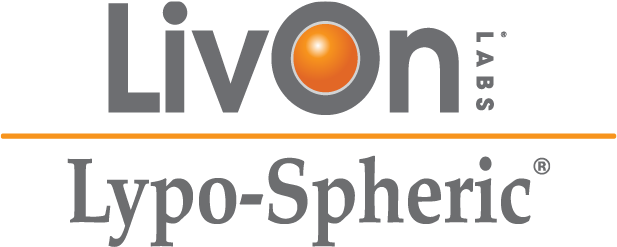Scientific Studies and Resources
References, citations, and summaries.
Vitamin C [non-liposomal] bioavailability decreases with dose size
As dose size increases,
Based on previous recommended daily allowance (RDA) studies by the National Institutes of Health,
Liposomes can be used to effectively deliver therapeutic agents particular cell types (mononuclear phagocytic system, particularly macrophages). These cells are of particular importance in the immune system.
Levine M, Conry-Cantilena C, Wang Y, Welch RW, Washko PW, Dhariwal KR, Park JB, Lazarev A, Graumlich JF, King J, Cantilena LR. (1996), “Vitamin C pharmacokinetics in healthy volunteers: evidence for a recommended dietary allowance,” Proc Natl Acad Sci U S A. 1996 Apr 16;93(8):3704-9
Authors report
Mitsopoulos P, Suntres ZE, (2011), “Protective Effects of Liposomal N-Acetylcysteine against Paraquat-Induced Cytotoxicity and Gene Expression,” J Toxicol.
N-acetylcysteine (NAC) was encapsulated in liposomes and administered as a treatment for paraquat poisoning. Pretreatment with this liposomal NAC was found to be more effective than conventional drugs in reducing the effects of paraquat poisoning.
Liposomes were used to deliver peptides agents which normally break down in the stomach. Bioavailability in some tests improved by 460%.
Oral consumption of Setria®️ Glutathione may help to support skin elasticity in healthy women.
Supplementation with Lypo-Spheric® Vitamin C helped to reduce the appearance of fine lines and wrinkles in as little as four weeks.
Scientists administered Magtein®️ to adults with cognitive decline helped to improve magnesium levels in the body and support cognitive function.
Qifeng, Sun et. al. Regulation of structural and functional synapse density by L-threonate through modulation of intraneuronal magnesium concentration. Neuropharmacology. 2016;108:426–439.
Scientists examined the mechanisms of the l-threonate component of Magtein®️ to discover why it can raise magnesium levels in the brain.
Researchers found that white blood cells absorbed 50% more Vitamin C from Lypo-Spheric® Vitamin C than a Vitamin C powder.
